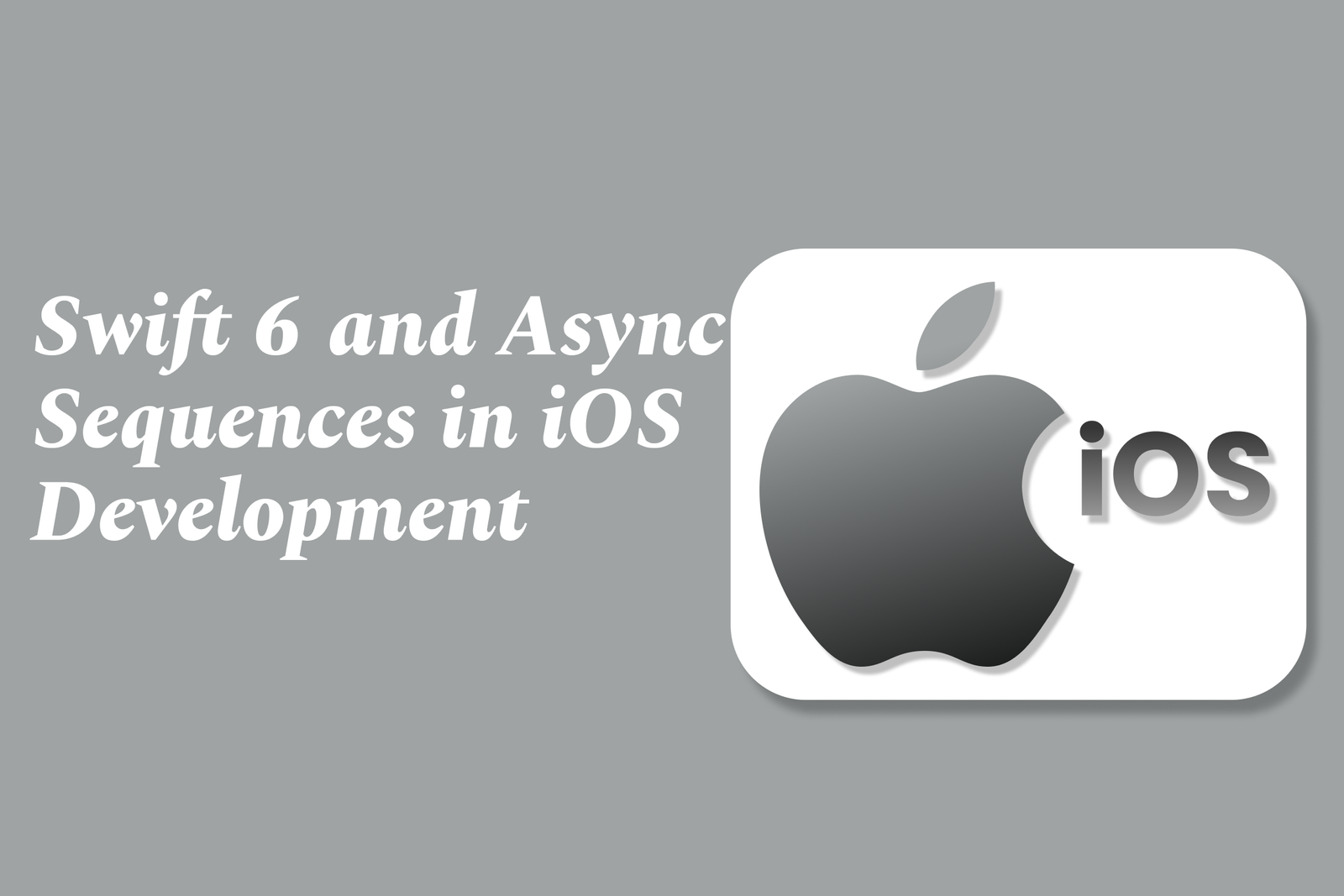Swift 6 and async sequences in iOS development
Swift 6 enhances iOS development by introducing stricter concurrency safety and powerful async features. Async Sequences simplify handling asynchronous data streams with clean, readable code, making it easier to manage events like networking or user input using Swift’s modern async/await syntax.
Swift 6 and Async Sequences in iOS Development
1 ) Introduction to Swift 6
Swift 6 is a major release expanding the language to more platforms beyond iOS.
Enhancements include better memory safety, expanded Linux and Windows support, new low level concurrency APIs, cross platform APIs like Swift Testing library, and embedding subsets of Swift.
Swift is becoming increasingly suitable not only for apps but also for libraries, internet scale services, and performance critical code.
2 ) Concurrency Improvements in Swift 6
Swift 6 introduces an opt in language mode enforcing strict data race safety, now surfaced as compiler errors rather than warnings.
Improved compiler analysis reduces false positives in detecting data races.
New synchronization library provides low level concurrency tools such as atomic operations and mutexes.
These changes make concurrent programming safer and help developers catch potential issues early.
3 ) Typed Throws Feature
Functions can now declare the specific error type they throw in the signature, enhancing error handling precision.
This is particularly helpful in generic code and in constrained environments like embedded systems.
Typed throws generalizes throwing behavior and allows propagating error types in generic functions, improving both safety and code clarity.
4 ) Ownership Model Enhancements
Swift 6 extends support for non copyable types (~Copyable) into generics, enabling better resource management and performance optimizations.
This empowers developers to write generic code handling copyable and non copyable types uniformly, aiding unique ownership and reducing runtime overhead.
5 ) AsyncSequence Protocol and AsyncStream
AsyncSequence is the asynchronous counterpart to Swift’s Sequence protocol, allowing elements to arrive over time and be iterated asynchronously using `for await` loops.
Creating custom AsyncSequences can be complex, but the AsyncStream type simplifies defining asynchronous streams to adapt callback or delegation APIs to async/await.
AsyncStream allows yielding values asynchronously and handling cancellation effortlessly, integrating naturally with Swift Concurrency.
6 ) Practical Use Cases and Migration Advice
Async sequences facilitate handling asynchronous events like networking, timers, or streams of data in a concise and readable manner.
Although existing concurrency and async/await features exist, Swift 6’s improvements make full concurrency checks the default, making migration essential for future proofing codebases.
Developers are advised to enable Swift 6’s concurrency features progressively or use feature flags to ease migration.
Swift 6 sets the stage for improved safety, performance, and concurrency in iOS and other platforms.
7 ) Swift 6 vs Combine Framework
Swift’s async/await and AsyncSequence aim to gradually replace some Combine use cases, especially networking.
Combine remains valuable for reactive programming scenarios like observing property changes or user input.
Async sequences offer simpler, more natural async event handling where applicable but Combine will coexist for the foreseeable future.
Summary
Swift 6 marks a pivotal step in enhancing Swift’s concurrency capabilities with strict data race safety, improved error handling via typed throws, and better ownership models. Its support for AsyncSequence and AsyncStream simplifies asynchronous programming, making it easier to handle async events and streams with modern syntax. The language advances require mindful migration but promise safer, high performance, and more scalable iOS and cross platform development.
https://justacademy.in/news-detail/swiftui-charts-framework:-what?s-new-in-2025
https://justacademy.in/news-detail/why-react-native-is-still-the-fastest-way-to-build-apps
https://justacademy.in/news-detail/how-react-native-is-helping-build-inclusive-apps
https://justacademy.in/news-detail/react-native-and-expo:-the-dynamic-duo-of-mobile-development
https://justacademy.in/news-detail/the-rise-of-react-native-in-augmented-reality-apps
Related Posts
Java supports GDPR and data privacy by enabling secure data handling through encryption, controlled access, and precise data management. It allows developers to minimize PII exposure, ensure data confidentiality, and design workflows that comply with data protection regulations effectively.
Java code quality tools have evolved to include advanced static analysis, integrated security checks, and AI-powered code reviews. These updates help developers detect bugs, enforce coding standards, and enhance security, streamlining the development process and improving overall code reliability.
Java remains a cornerstone in big tech companies, evolving with modern features like records, pattern matching, and virtual threads. Its robust ecosystem, enhanced performance, and growing AI integrations keep it vital for both legacy systems and innovative new projects.
Java and CI/CD pipeline optimizations streamline Java application development by automating builds, tests, and deployments. They improve efficiency through parallelization, caching, and secure secrets management, enabling faster feedback loops and more reliable, scalable software delivery.
Java supports modern cryptography standards through its flexible Java Cryptography Architecture (JCA), enabling integration of advanced algorithms like AES, EdDSA, and post-quantum tools. Libraries like Bouncy Castle offer FIPS-certified, hardware-accelerated implementations for secure development.
Java 23 enhances record patterns by enabling concise, direct destructuring of record components within pattern matching, simplifying type checks and data extraction. This improvement boosts code readability and expressiveness by reducing boilerplate in handling immutable data classes.
Java remains a top choice for mobile app backends, powering scalable, secure, and high-performance server-side solutions. Latest trends include cloud-native microservices, reactive programming, and enhanced JVM optimizations, enabling efficient, flexible, and robust mobile backend development.
Java SE 24 and LTS Java SE 21 offer enhanced features and performance, while Apache Spark 4.0.0 introduces Scala 2.13 support and advanced ML and SQL capabilities. Together, they empower developers to build scalable, high-performance data applications with modern tools.
JUnit 5 modernizes Java testing with a modular architecture, improved assertions, and seamless Java 8+ support. Beyond JUnit, tools like Mockito and AssertJ enhance mocking and assertions, creating a powerful, flexible ecosystem for writing clean, efficient Java unit tests.
Java plays a pivotal role in cloud automation tools by providing a robust, platform-independent language used to build scalable automation frameworks like Jenkins and Selenium, enabling efficient CI/CD pipelines, testing, and orchestration across diverse cloud environments.










